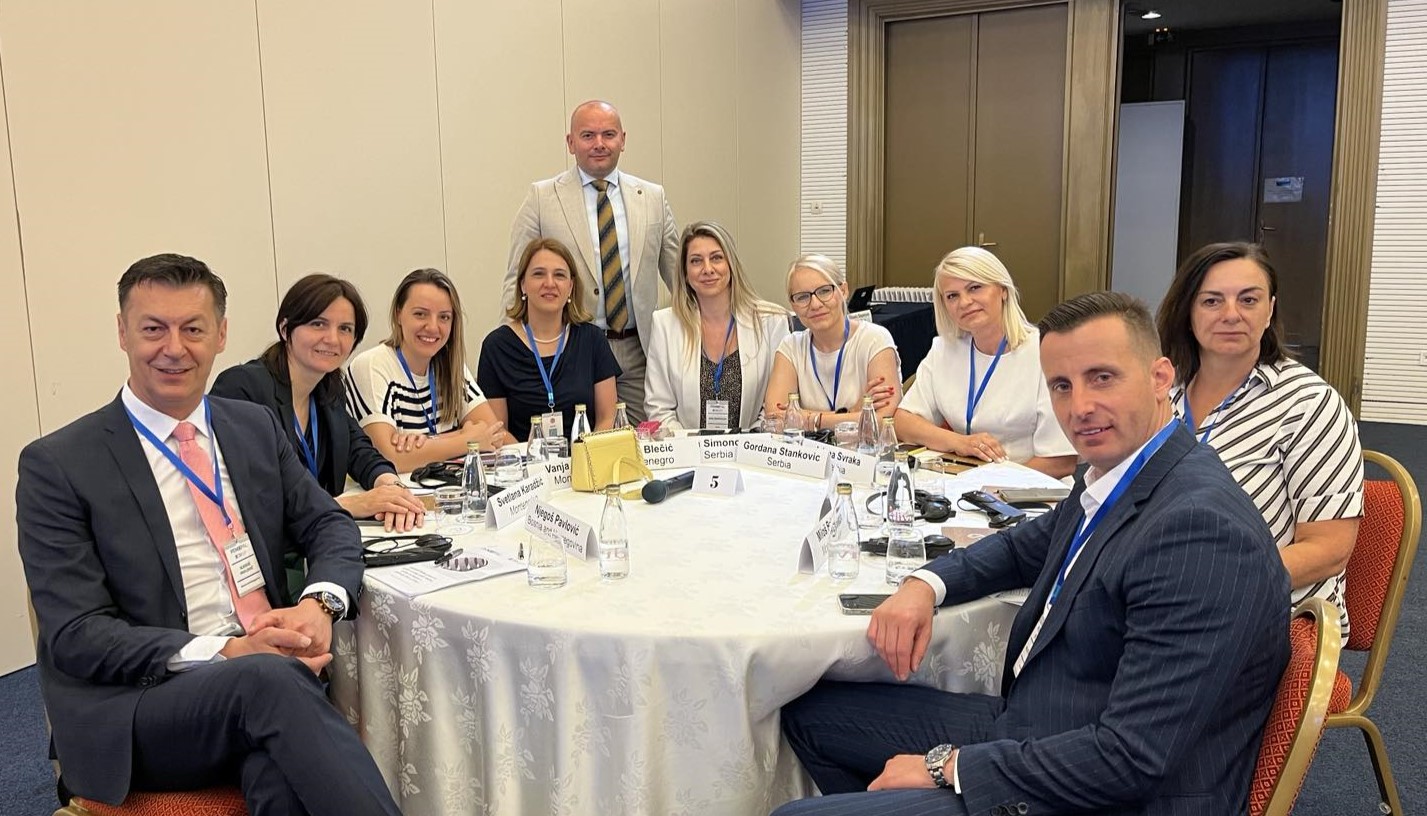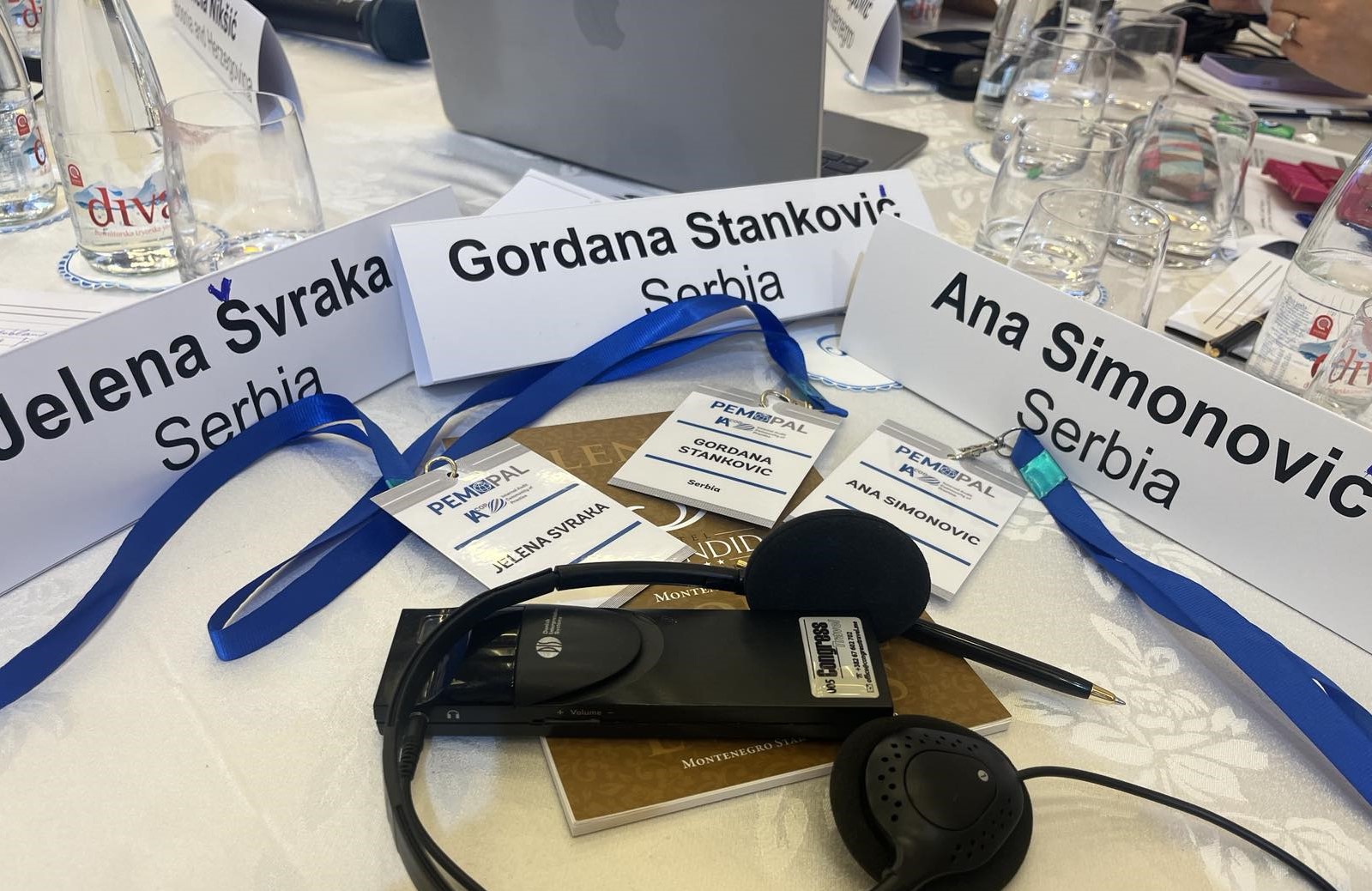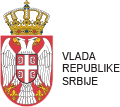New Internal Audit Manual for Better Public Finance Management
Representatives from the Central Harmonization Unit (CHU) of the Serbian Ministry of Finance attended a regional internal audit conference held in June in Montenegro. This event, organized by the Public Expenditure Management Peer Assisted Learning (PEMPAL) Internal Audit Community of Practice (IACOP) network and Montenegro's Ministry of Finance, gathered over 50 participants from 25 countries across Europe and Central Asia.
Since Serbia is currently working on aligning its regulatory and methodological framework with international internal audit standards, the participation of the CHU delegation in this conference was well-timed. The delegation included certified internal auditors Ana Simonović, Jelena Švraka, and Gordana Stanković.

With support from the "EU Public Finance Management Facility" project, the CHU has started drafting a new Internal Audit Manual, updating relevant regulations, and developing a training curriculum for internal auditors. Participation in this key regional forum in the field of internal audit in the public sector allowed the team to assess the current direction of this process, exchange experiences with colleagues from other countries, and further refine the content of the documents in progress.
“Through group work, we collaboratively developed effective solutions for the structure of the future Internal Audit Manual – focusing on what should be emphasized and what should be harmonized with global standards. The new standards are not a radical change, but an improvement – they provide a broader perspective and highlight topics that enhance the quality of internal audit," emphasized the representatives of the Serbian delegation.
An important part of the discussion was the relationship between international internal audit standards, the existing legal framework, and the specificities of the public sector in Serbia.
“The standards are primarily designed for the private sector. In our case, the situation is more complex because we have many public funds users and limited resources. That is why it is important that the Manual provides clear guidelines for consistent application in the daily work of auditors in our environment," explained Ana Simonović.

The conference experience confirmed that Serbia is moving in the right direction but also created opportunities for further improvement.
“We shared examples of good practice, especially in the areas of performance and sustainability audits, which are topics we need to improve further. This will be directly reflected in the content of the materials we are developing, supported by the EU's aid for public finance management in Serbia," added Jelena Švraka and Gordana Stanković.
Concepts such as professional skepticism and due diligence, although familiar, gain additional importance in light of the new standards. "The auditor should analyze and re-examine - not assume. The Manual can help strengthen and maintain this culture," concluded Simonović.
In the public sector, internal auditors help ensure that decisions are based on facts, risks are identified promptly, and public funds are used responsibly, following the principles of economy, efficiency, and effectiveness.
Adapting international internal audit standards involves aligning with domestic laws and overcoming capacity limitations. The new Internal Audit Manual will serve as a crucial tool for applying standards practically across the public sector in Serbia. These efforts are part of the "EU Public Finance Management Facility" project, funded by the European Union and implemented by UNDP, in partnership with the Center for Excellence in Finance (CEF) and the Ministry of Finance of Slovakia.
What is the Central Harmonization Unit?
The Central Harmonization Unit (CHU) is a
crucial body responsible for improving financial management and control (FMC)
in Serbia's public sector, aiming to ensure the efficient, effective, and
transparent use of public funds.
It was created to facilitate the
harmonization of the financial management and control system, as well as
internal audit methods. The name itself (Central Harmonization Unit) highlights
its role in aligning FMC practices with international standards and best
practices in the EU.
The CHU is an organizational unit within
the Ministry of Finance, which grants it authority and the capacity to exercise
its powers effectively. It collaborates with other government bodies, such as
the State Audit Institution (SOI) and the Anti-Corruption Agency, as well as
other relevant agencies, to enhance the FMC and fight against corruption.


